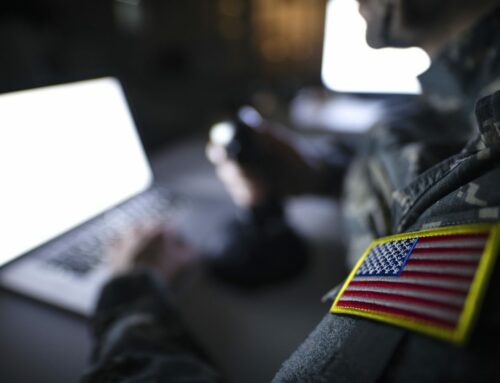Peter Adam
ITS-BISS III — the replacement for ITS-BISS II, EPA’s current Information Technology Solutions – Business Information Strategic Services contract — will provide plenty of opportunities.
Big opportunities — the IT-BISS III awards of up to $550 M will likely far exceed the current program, with spend of about $100 M to date.
1. Opportunities for Large Business and Small Business
One of the two ITS-BISS III components, Functional Area (FA) 1 Integrated Program Support (IPS) Services, is anticipated to be a Partial SB Set-Aside. And the other, FA 2, Compliance Support (CS) Services, is expected to be an SB Set-Aside, completely.
Currently, word is that EPA has been disappointed in the dearth of responses to some of the ITS-BISS II TO proposals. The submission action has been less than robust.
The fact that not all of the big primes have won significant awards — or even bid seriously on TOs — has been duly noted. And the value of the ITS-BISS endeavor, in its entirety is expected to increase this go-round.
The EPA remains on the prowl – aggressively – for major bidders and teams that can demonstrate multiple skill sets in the various required functional areas, enabling them to reap ITS-BISS III awards.
ALL Bidders should beware, though. The bar will be especially high. EPA is an experienced and critical reviewer – to say the least — in its IT systems and support performance requirements. And its IT “culture” is one of the most progressive among agencies. It is helping to lead the way in Government adoption of Agile Services and ongoing digital Government reform efforts.
Vendor “wannabes” whose capabilities and experience don’t quite cut the advanced IT mustard are likely to have their proposals tossed, and tossed quickly……into EPA’s circular file.
2. EPA’s Advanced IT Culture
EPA’s advanced IT status is at least in part the legacy of their former Chief Technology Officer and U.S. Digital Services Lead, Greg Godboudt. Greg is credited with having a large effect on updating procurement language to bring more advanced civilian technology into the EPA. Prior to working at EPA, Greg co-founded GSA’s 18F Digital Services Agency. This highly specialized entity develops and helps Government organizations implement methods for using advanced IT methodologies, e.g., lean startup techniques, open source code, and contemporary programming languages.
And Greg Godboudt’s mark on the EPA’s IT culture….abides.
So responders to the ITS-BISS III RFP — which is expected to drop soon — will have to demonstrate, incontrovertibly, their capability, to meet evolving and ever-more-advanced IT service support requirements, as discussed in more detail below.
3. From ITS-BISS II to ITS-BISS III
The seven contractors who occupy prime positions on the current ITS-BISS II contract are all big league: CRSA, Booz Allen, Project Performance Corp. (PPC), Blue Canopy, ICF, XLA, and Ace Info Solutions.
Their tenure is slated to end 31 January 2017.
According to the Pre Solicitation material, ITS-BISS III, as is the case with its predecessor, will call for provision of a comprehensive array of IT support services, nation-wide in scope. These are IT services typically required by Government entities: IT Policy, Planning, Security, Enterprise Architecture (EA), Management and Support, Organizational Development, Human Capital Management, etc.
ITS-BISS III will be awarded and managed by EPA’s Office of Acquisition Management (OAM). The Sponsoring Program Office will be EPA’s Office of Technology Operations and Planning (OTOP) within the Office of Environmental Information (OEI).
4. Required: Demonstration of Enhanced, Advanced IT Service Delivery Capability
Competition for ITS-BISS III will be tough. But this business is attractive and is generating strong interest on the market. Expectations at EPA are high, and bidders will need to prepare proposals that win every possible evaluation point.
What the winning bidders need:
- To build a good team
- Strong response to sample tasks
- Price to win (PTW) study to determine winning prices
- Risk management processes and procedures
- Ensure past performance write ups are properly prepared
Of particular importance in this case, bidders will have to demonstrate capability to provide Agile Services and ongoing advanced digital government technology. This includes proving how they can meet evolving and ever-more-sophisticated service support requirements.
Ability to use an Agile Service Delivery Model is key here. This rapid prototyping methodology requires especially close coordination and cooperation between contractor and supervising Government personnel. Bidders must show they know how to perform accordingly, in an Agile environment, working closely alongside their government cohorts.
And furthermore, Bidders should demonstrate their ability to design and implement Next Generation Networks. These advanced networks can provide services including Telecommunications; and they are able to make use of multiple broadband and quality of Service-enabled transport technologies and have functionality independent of underlying transport-related technologies. After all, we are now moving into the outskirts of the Fourth Industrial Revolution.
5. Outside Help for Bidders
Many bidders will find they need help to prepare a winning proposal. No amount of “help” can prepare an unqualified company to win. But often qualified winners are short of personnel needed to prepare a winning proposal. The winning element a company lacks may vary widely. Some bidders may need a Price to Win (PTW) analyst to derive the winning price. Others may need a subject matter expert (SME) who understands the program. Others will need writers who can prepare their past performance. And other options are too numerous to mention. These programs sometimes even find Large Business with too much work in-house, and they need to outsource part of the effort.
Don’t forget the Gospel according to Ben Franklin – “The Lord helps those who seek help when it is needed.”





Leave A Comment